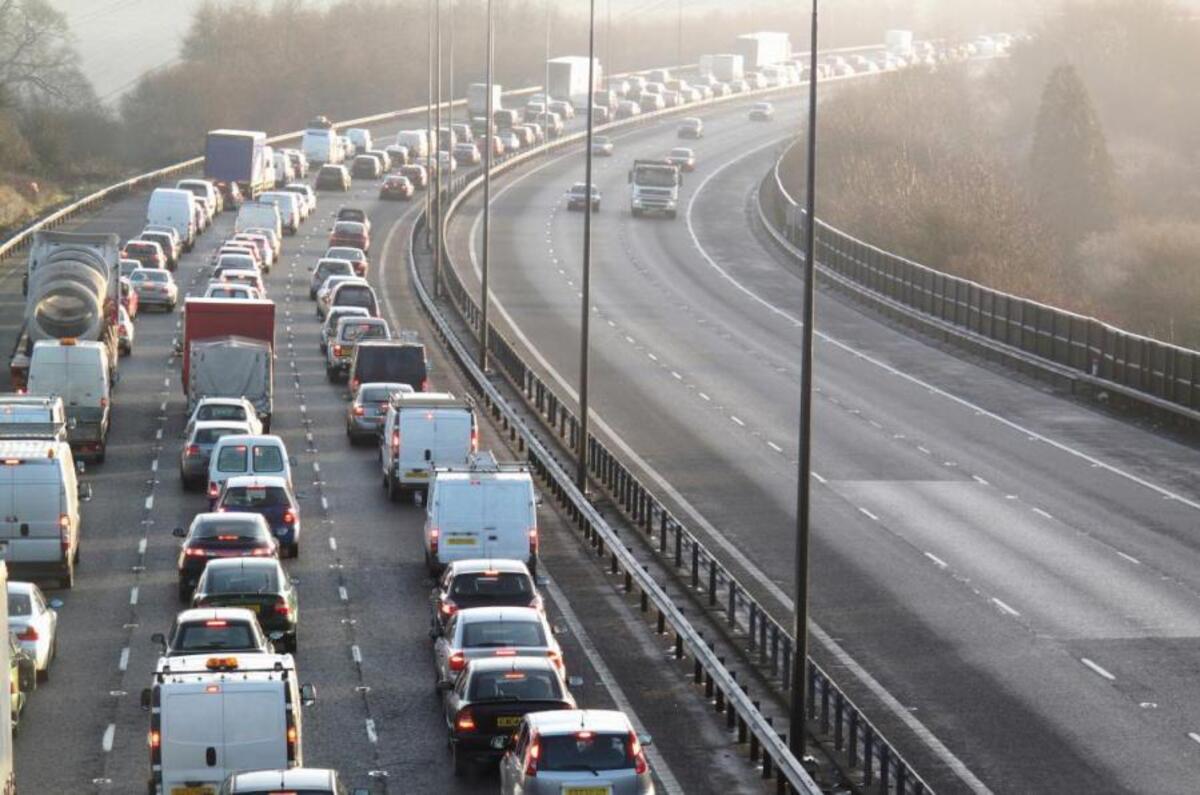Removing hard shoulders on smart motorways has made them more dangerous, according to a survey of drivers by the AA.
Eight out of 10 of the 20,845 respondents felt that by opening up hard shoulders to traffic as part of all-lane running motorway programmes, authorities had increased the risk for drivers whose cars had broken down and who had nowhere out of the flow of traffic to park up.
The government is creating smart motorways across the UK to increase road capacity in the face of rising traffic. Such sections work by opening up the hard shoulder to traffic during busy times. The idea was successfully implemented on the M42 from 2006.
However, the government is now considering future schemes that include those with hard shoulders permanently opened to traffic. In addition, guidance from Highways England for subsequent programmes has seen lower requirements for the amount of distance between lay-bys – officially known as Emergency Refuge Areas – from every 800m, as on the M42, to up to 2.6km (1.5 miles). Campaigners say this drastically reduces safety for cars that break down.
The AA says 130,000 of its members' vehicles break down on motorways each year, and it wants to see twice as many lay-bys as is currently recommended to reduce the risk of cars being hit from behind on a live hard shoulder. It also wants lay-bys to be twice as long because it believes that if an HGV is parked in a layby it makes it almost impossible for a car to safely stop there too.
Highways England has previously reported issues with drivers, especially foreign truckers, parking in laybys despite there being no emergency.
AA president Edmund King said: “Four-fifths of our members think that motorways without hard shoulders are more dangerous.
“While we support measures to improve motorway capacity, we do not think safety should be compromised. We do not accept that the current criteria of an Emergency Refuge Area or exit at least every 2.6km is safe.
“Breaking down in a live running lane with trucks thundering up behind you is every driver’s worst nightmare. The official advice is to dial 999, which just shows how dangerous the situation can be.
“If drivers can see the next lay-by, they are much more likely to make it to the relative safety of that area even if their car has a puncture or is overheating. If they can’t see the lay-by, they often panic and stop in a live running lane. If more lay-bys are designed at the planning stage it will be less expensive and safer.”
Mr King said he had written to Transport Minister Chris Grayling, expressing his concern, and had not yet received a response. Mr King also gave evidence to a cross-party Transport Committee earlier this year, which released a report in June saying that the Department for Transport should not proceed with smart motorways until the safety concerns had been addressed. Mr King said he had not yet seen a government response to the report.




Join the debate
Add your comment
I agree, for once, with the AA.
Facts VS Colloquial Evidence
Fact: 8 out of 10 motorists surveyed *perceive* hard shoulder-less motorways to be less safe.
That is not the same thing as Fact: hard shoulder-less motorways are less safe. I would like the AA to present the stats regarding the safety of hard shoulder-less / smart motorways - because Highways England say above that, in fact, they have cut collisions down by 21%. It appears as though they also cut congestion, but there were no stats quoted to support that in the above article.
If the above statement is true, and therefore represents FACT, then I don't care what the perceived opinion of laymen in the subject area is - sounds like smart motorways are the way to go.
Traffic
With a hard shoulder traffic could continue at 70mph unless there's a more serious issue.
Four lane running assumes that breakdowns and minor accidents aren't that frequent, but there's usually a couple of each every day based on my commute.
There's usually lorries in 3 out of 4 lanes as well, but that's a different topic.